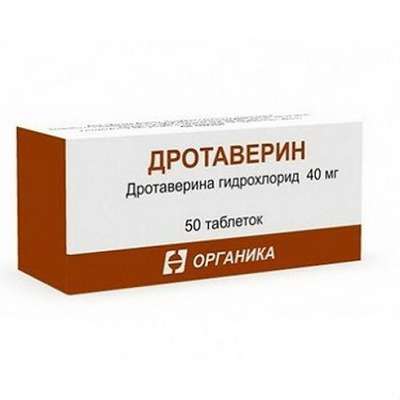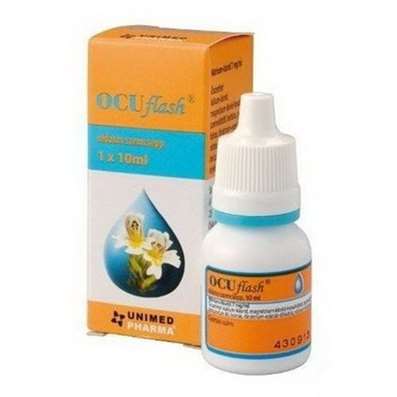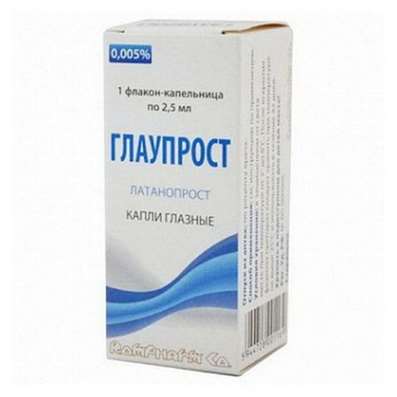Instruction for use: Ketamine
I want this, give me price
Latin name of substance Ketamine
Ketaminum (genus.Ketamini)
Chemical name
(±) -2- (2-Chlorophenyl) -2- (methylamino) cyclohexanone (as hydrochloride)
Gross formula
C13H16ClNO
Pharmacological group:
Anesthetic means
The nosological classification (ICD-10)
R52 Pain, not elsewhere classified: Pain syndrome of radicular origin; Pain syndrome of small and medium intensity of different genesis; Pain syndrome after orthopedic surgery; Pain syndrome in superficial pathological processes; Radicular pain in the background of osteochondrosis of the spine; Radicular pain syndrome; Pleural pain; Chronic pain
T30 Thermal and chemical burns of unspecified site: Pain syndrome with burns; Pain in burns; Pain with burns; Sluggishly healing post-burn wounds; Deep burns with a wet scab; Deep burns with abundant compartments; Deep burn; Laser burn; Burn; Burn of the rectum and perineum; Burn with mild exudation; Burn disease; Burn injury; Superficial burn; Superficial burn of I and II degree; Superficial skin burns; After-burn trophic ulcer and wound; Post-burn complication; Loss of fluid for burns; Sepsis burn; Thermal burns; Thermal skin lesions; Thermal burn; Trophic after-burn ulcers; Chemical burn; Surgical burn
Z100.0 * Anesthesiology and premedication: Abdominal surgery; Adenomectomy; Amputation; Angioplasty of the coronary arteries; Carotid artery angioplasty; Antiseptic treatment of skin in wounds; Antiseptic treatment of hands; Appendectomy; Atheroctomy; Balloon coronary angioplasty; Vaginal hysterectomy; Venous bypass; Interventions on the vagina and cervix; Interventions on the bladder; Interference in the oral cavity; Reconstructive-reconstructive operations; Hand hygiene of medical personnel; Gynecological Surgery; Gynecological interventions; Gynecological operations; Hypovolemic shock during surgery; Disinfection of purulent wounds; Disinfection of the edges of wounds; Diagnostic Interventions; Diagnostic procedures; Diathermocoagulation of the cervix; Long-term surgeries; Replacement of fistulous catheters; Infection in orthopedic surgical interventions; Artificial heart valve; Kistectomy; Short-term outpatient surgery; Short-term operations; Short-term surgical procedures; Cryotyreotomy; Blood loss during surgical interventions; Bleeding during surgery and in the postoperative period; Kuldotsentez; Laser coagulation; Laserocoagulation; Laser retinopathy of the retina; Laparoscopy; Laparoscopy in gynecology; Likvornaya fistula; Small gynecological operations; Small surgical interventions; Mastectomy and subsequent plastic surgery; Mediastinotomy; Microsurgical operations on the ear; Mukinging operations; Suturing; Minor surgery; Neurosurgical operation; Eclipse of the eyeball in ophthalmic surgery Orchiectomy; Pancreatectomy; Pericardectomy; The rehabilitation period after surgical operations; Reconvalence after surgical intervention; Percutaneous transluminal coronary angioplasty; Pleural Thoracocentesis; Pneumonia postoperative and post traumatic; Preparing for surgical procedures; Preparing for a surgical operation; Preparation of the surgeon's arms before surgery; Preparation of the colon for surgical interventions; Postoperative aspiration pneumonia in neurosurgical and thoracic operations; Postoperative nausea; Postoperative hemorrhage; Postoperative granuloma; Postoperative shock; Early postoperative period; Myocardial revascularization; Resection of the apex of the tooth root; Resection of the stomach; Bowel resection; Resection of the uterus; Liver resection; Small bowel resection; Resection of a part of the stomach; Reocclusion of the operated vessel; Gluing of tissues during surgical interventions; Suture removal; Condition after eye surgery; Condition after surgery; Condition after surgery in the nasal cavity;Condition after gastrectomy; Condition after resection of the small intestine; Condition after tonsillectomy; Condition after removal of duodenum; Condition after phlebectomy; Vascular Surgery; Splenectomy; Sterilization of surgical instrument; Sterilization of surgical instruments; Sternotomy; Dental surgery; Dental intervention on periodontal tissues; Strumectomy; Tonsillectomy; Thoracic surgery; Total gastrectomy; Transdermal intravascular coronary angioplasty; Transurethral resection; Turbinectomy; Removal of a tooth; Cataract removal; Removing Cysts; Removal of tonsils; Removal of myoma; Removal of mobile milk teeth; Removal of polyps; Removal of a broken tooth; Removal of the uterus; Removal of seams; Urethrotomy; Fistula of the luminal ducts; Frontoetmoidohaimorotomy; Surgical infection; Surgical treatment of chronic ulcers of extremities; Surgery; Surgery in the anus; Surgery on the large intestine; Surgical practice; Surgical procedure; Surgical interventions; Surgical interventions on the digestive tract; Surgical interventions on the urinary tract;Surgical interventions on the urinary system; Surgical interventions on the genitourinary system; Surgical intervention on the heart; Surgical procedures; Surgical operations; Surgical operations on veins; Surgical intervention; Vascular; Cholecystectomy; Partial resection of the stomach; Extraperitoneal hysterectomy; Percutaneous transluminal coronary angioplasty; Percutaneous transluminal angioplasty; Coronary artery bypass grafting; Extirpation of the tooth; Extirpation of infant teeth; Extirpation of pulp; Extracorporeal circulation; Extraction of the tooth; Extraction of teeth; Extraction of cataracts; Electrocoagulation; Endourological interventions; Episiotomy; Ethmoidotomy; Complications after tooth extraction
CAS code
6740-88-1
Characteristics of Ketamine
White or almost white crystalline powder with a weak characteristic odor. Easily soluble in water and alcohol, pH of aqueous solutions of 3.5-4.5.
Pharmacology
Pharmacological action - analgesic, anesthetic, hypnotic.
Oppressing the associative zone and subcortical formations of the thalamus (dissociative anesthesia). Easily passes the histohematological barriers, including the BBB. In the liver, demethylated, losing activity. Most of the biotransformation products are released within 2 hours with urine, a small amount of metabolites remains in the body for several days. Cumulation with repeated administration is not noted. A special feature of the narcotic effect is the speed of the onset, short duration, and the maintenance of adequate adequate ventilation in the narcotic phase. Causes severe analgesia. Poorly relaxes the skeletal musculature; In the phase of anesthesia, pharyngeal, laryngeal and cough reflexes persist. Do not depress or even stimulate the cardiovascular system. Malotoxic. It has no cholino- and adrenoblocking properties, as well as antihistaminic activity. With iv administration of 0.5 mg / kg, consciousness is turned off after 1-2 minutes for 2 minutes, and analgesia develops within 10 minutes and lasts 2-3 hours. With the / m introduction, the effect comes later, but has a long duration.
Application of the substance Ketamine
Introductory anesthesia, basic anesthesia for the anesthesia of short-term operations and painful instrumental interventions (including dental, ophthalmological, otorhinolaryngological, gynecological and obstetrical practices, and diagnostic procedures - endoscopy, cardiac catheterization, etc.), during emergency surgical operations in patients with traumatic shock and blood loss, anesthesia during the transportation of patients, while treating the burn surface.
Contraindications
Hypersensitivity, impaired cerebral circulation (including in the anamnesis), arterial hypertension, preeclampsia, eclampsia, alcoholism, epilepsy in children.
Update of information
Contraindications:
angina pectoris, myocardial infarction (including the last 6 months);
conditions accompanied by elevated blood pressure;
chronic renal failure.
Restrictions on the use
Kidney disease, decompensated chronic heart failure, operations on the larynx and pharynx.
Side effects of Ketamine
Increased blood pressure, tachycardia, drooling, nausea, dyspnea, respiratory center depression, muscle rigidity and increased muscle activity, obturation of the upper respiratory tract due to spasm of chewing muscles and tongue twisting. During the withdrawal from the state of anesthesia - hallucinations, psychomotor agitation and prolonged disorientation, psychosis. Soreness and congestion along the vein at the injection site.
Interaction
Strengthens the effect of inhalation anesthesia. Deepens the muscle relaxation caused by tubocurarine chloride and suxamethonium iodide, does not change - pancuronium bromide. During anesthesia in patients taking iodine-containing drugs and thyroid hormones, there is a high probability of developing hypertension and tachycardia (they are eliminated by beta-blockers). Droperidol and benzodiazepines, incl. diazepam, weaken the risk of manifestations of psychotomimetic and motor activity, as well as the occurrence of tachycardia and an increase in blood pressure. Pharmaceutically incompatible with barbiturates.
Update of information
Interaction with lincomycin and lithium preparations
Before applying ketamine, it is necessary to cancel lincomycin and lithium preparations (for 1-2 days).
Interaction with MAO inhibitors
Before using ketamine, MAO inhibitors should be discontinued (within 15 days).
Other drugs
It is not recommended to appoint ketamine with sympathomimetics and drugs that have a stimulating effect on CAS (increased hypertensive and arrhythmogenic action, increased myocardial oxygen demand).
The cardiostimulatory effect of ketamine is weakened when combined with neuroleptics and anxiolytics.
Routes of administration
IV.

 Cart
Cart





